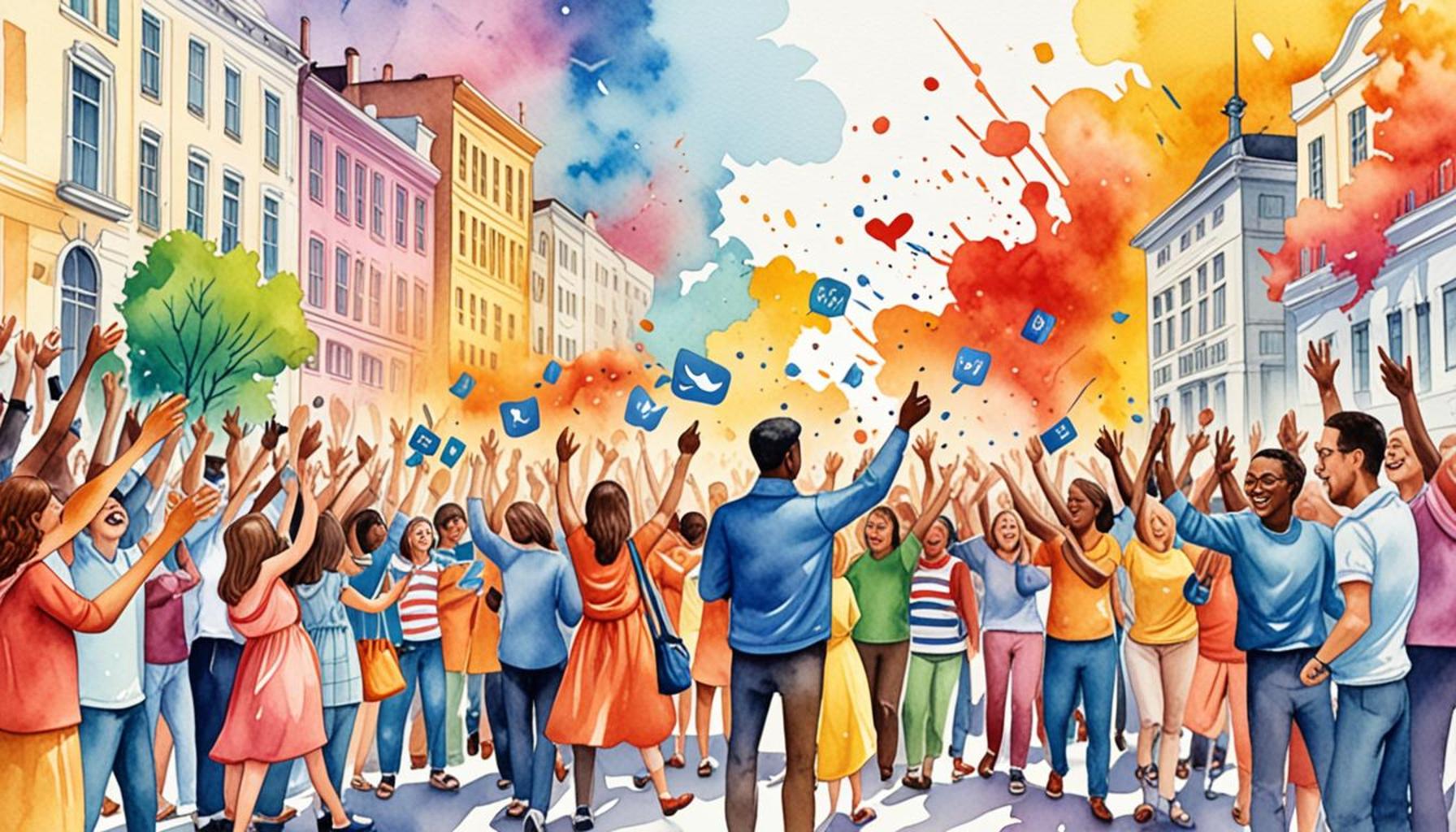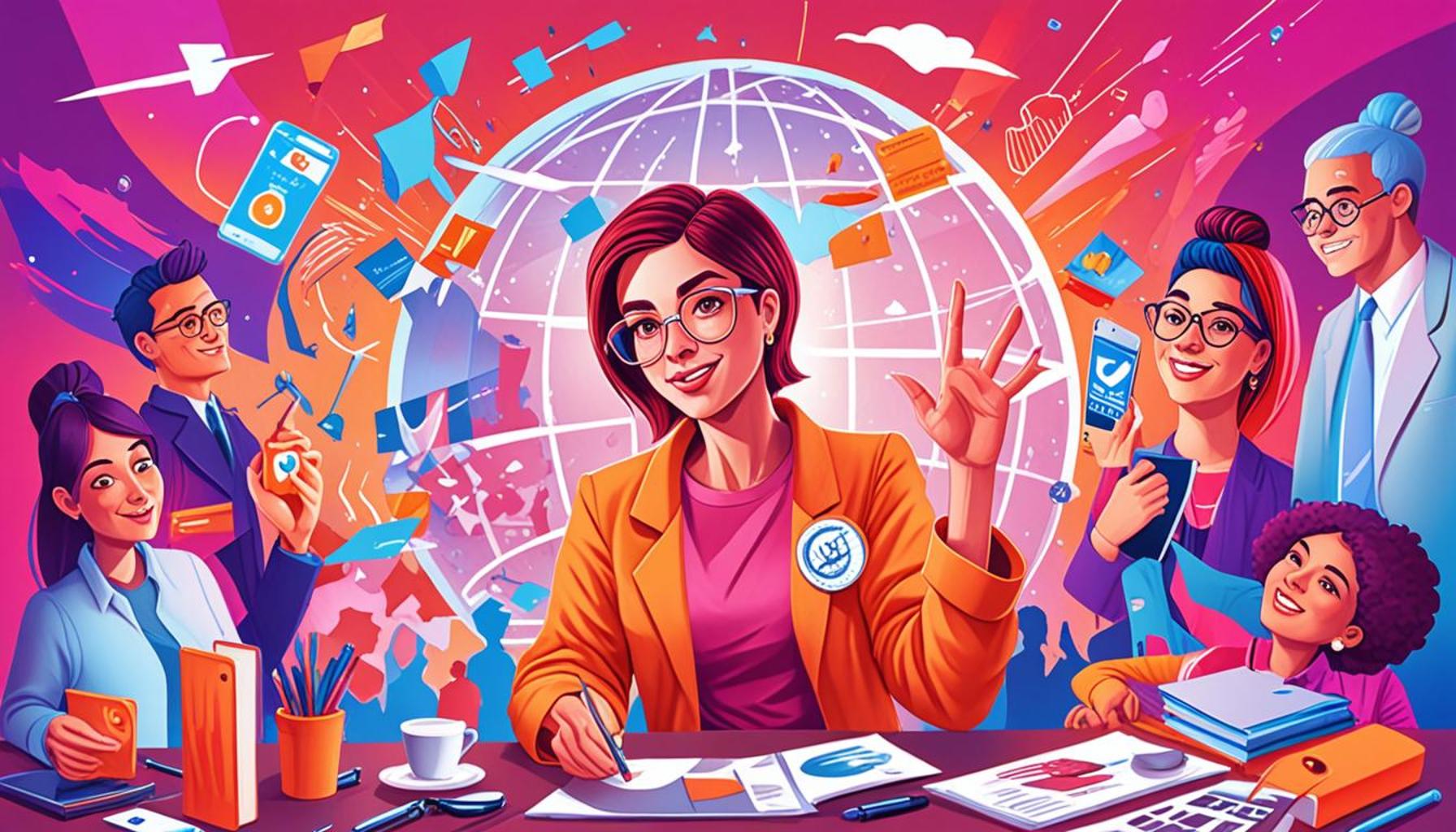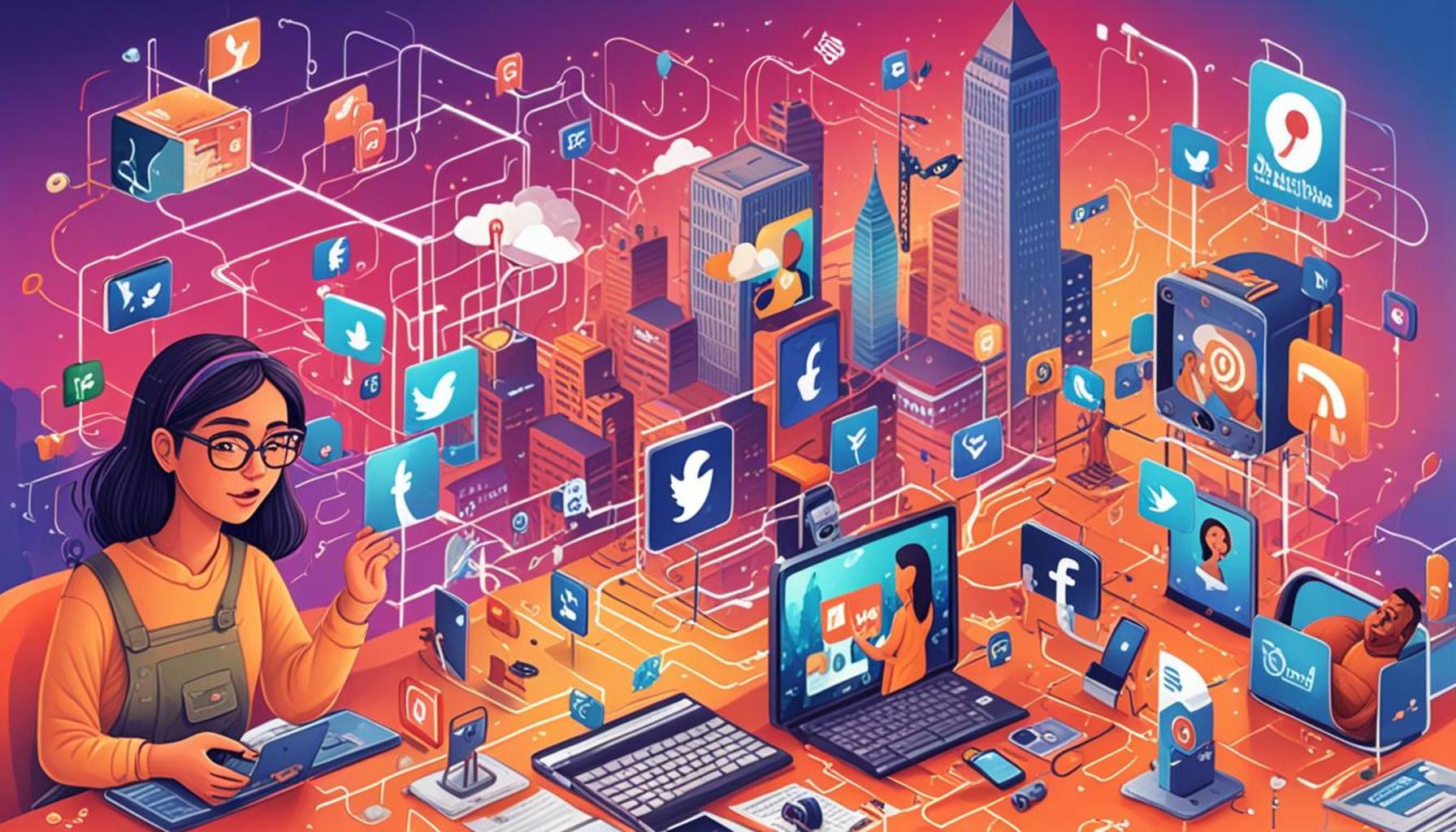The Impact of Social Media Campaigns on Civic Participation in Government Benefit Programs

Understanding the Impact of Social Media on Civic Engagement
In today’s interconnected world, the relevance of social media extends far beyond personal connections and sharing life updates. Platforms such as Facebook, Twitter, and Instagram have become crucial in shaping public opinions and influencing how citizens engage with their government. The use of social media as a conduit for disseminating information about government benefit programs represents a significant shift in how information is shared and accessed, often bridging gaps between the government and its constituents.
One of the primary benefits of utilizing social media for government communications is the increase in awareness. For instance, a campaign highlighting the Supplemental Nutrition Assistance Program (SNAP) reached millions when shared widely on Twitter and Facebook. This campaign was particularly impactful in rural communities, where residents may not have easy access to traditional forms of outreach. Social media enables these campaigns to target specific demographics and reach individuals who might otherwise be unaware of their eligibility for various assistance programs. By utilizing rich media, such as infographics and short videos, governments can convey complex information in an easily digestible format.
The second significant impact is engagement. Social media platforms facilitate two-way communication, allowing citizens to interact directly with government entities. This interaction can manifest as comments, shares, or retweets, where individuals offer personal stories that relate to government programs. For example, the hashtag campaign #GetCovered encouraged people to share their health insurance experiences under the Affordable Care Act. This not only educated others but fostered a sense of community. Local officials can engage with constituents through Q&A sessions or online forums, leading to a more informed public that feels seen and heard.
Finally, mobilization is another critical component. Social media can energize communities, encouraging individuals to take action such as attending town hall meetings or signing petitions. A notable example is the grassroots movement that emerged during the COVID-19 pandemic, where citizens organized via Facebook groups to advocate for local policy changes in health and safety regulations. These digital communities can gather momentum quickly, demonstrating how social media can turn virtual engagement into real-world action.
The implications of social media in civic engagement are underscored by statistics from the Pew Research Center, which highlights that over 70% of Americans are active on social media, with many relying on these platforms for news about local government services. As we delve deeper into this investigation, it will be crucial to examine both successful case studies and the inherent challenges—such as misinformation and digital divides—that may impede the drive for genuine civic participation in these essential government benefit programs.
By understanding the impact of social media on civic engagement, we can better appreciate the dynamic interplay between technology and citizen involvement in the democratic process. It offers a lens for analyzing current challenges and forecasting the potential future of government-citizen interaction in the United States.
SEE ALSO: Click here to read another article
The Role of Social Media Campaigns in Increasing Access to Government Benefits
The increasing use of social media as a campaign tool has transformed how government benefit programs reach the public. At its core, social media opens the doors to accessibility, making crucial information about benefits available to a broader audience. A notable example is the widespread use of YouTube videos and TikToks that explain eligibility requirements and application processes for programs like Medicaid and the Children’s Health Insurance Program (CHIP). These platforms use engaging content to demystify often complicated bureaucracy, allowing viewers to understand their potential benefits without wading through dense paperwork or government websites.
Furthermore, the ability to disseminate information rapidly is one of the distinct advantages of social media. Campaigns can be launched with just a click and can quickly go viral, spreading messages far beyond their initial reach. For instance, a recent Instagram campaign aimed at educating young adults about student loan forgiveness programs garnered significant traction, using visually appealing graphics and testimonials to illustrate the real-life impact of these initiatives. Such outreach can lead to a measurable uptick in inquiries and applications, demonstrating the power of potent messaging and relatable content.
Benefits of Social Media in Civic Participation
To better understand the impact of social media campaigns on civic participation in government benefit programs, it’s essential to consider several key benefits:
- Targeted Outreach: Social media’s ability to target specific demographics enables programs to connect with those most in need of assistance. Tailored advertisements can penetrate communities that might overlook traditional outreach methods.
- Real-time Information: Social media allows for rapid updates regarding benefit program changes, deadlines, or new enrollment opportunities. By posting timely information, agencies can efficiently adapt to shifts in policy or public health crises.
- Community Building: Social media facilitates the formation of online communities around shared experiences, where beneficiaries can share insights and advice about accessing government aid. This peer support system can empower individuals and enhance participation.
- Increased Transparency: The open nature of social media allows for greater scrutiny of government programs, ensuring agencies remain accountable and responsive to community needs.
Amid rising discussions about the digital divide, addressing accessibility concerns remains paramount. While social media offers immense potential for civic engagement, there are significant barriers that must be navigated. Data from the Federal Communications Commission shows that approximately 19% of rural Americans lack sufficient broadband internet access, which can hinder participation in online benefit programs. This limitation underscores the need for inclusive strategies that accommodate diverse populations, particularly in underserved regions.
As we continue our exploration into the dynamics of social media campaigns in the context of government benefits, it becomes clear that while the digital landscape presents both opportunities and challenges, understanding these nuances is crucial for enhancing civic participation and ensuring that essential programs reach those who need them most.
Social media has become an influential tool in shaping public awareness and engagement surrounding government benefit programs. By leveraging platforms like Facebook, Twitter, and Instagram, civic organizations can disseminate critical information more effectively than traditional media outlets. The immediate and broad reach of social media enables these campaigns to target specific demographics, ensuring that the most vulnerable populations are informed about their rights and the services available to them. Moreover, user-generated content in the form of testimonials and shared experiences creates a sense of community, fostering greater public discussion. When individuals see peers discussing their successful applications for government benefits on these platforms, it encourages others to engage and seek out similar opportunities. This word-of-mouth effect amplifies the campaign’s reach, leading to increased participation in programs designed to assist citizens.In examining governmental responses, it becomes clear that agencies are increasingly aware of social media’s role in civic engagement. Many have implemented their own social media strategies to complement outreach efforts. By creating official accounts and engaging followers, these agencies can answer questions, dispel misinformation, and promote upcoming initiatives. This two-way communication nurtures trust between the government and the citizenry and enhances the overall efficacy of benefit programs.Furthermore, data analytics from social media platforms allow organizers to measure engagement and identify gaps in outreach. By assessing which demographics are responding to campaigns, organizations can adjust their messaging and strategies to ensure that no community is left behind. This data-driven approach not only increases civic participation but also contributes to a more equitable dissemination of government resources. The integration of social media into civic participation strategies marks a significant shift in how knowledge about government benefits is shared and consumed. The engagement strategies employed reflect a growing recognition of the importance of understanding and addressing community needs through modern communication channels. As these shifts continue to evolve, further investigation into their long-term impacts on civic participation will be essential to ensure that all citizens can effectively navigate government benefit programs.
LEARN MORE: This related article may interest you
A New Era of Engagement: Measuring the Effectiveness of Social Media Campaigns
The efficacy of social media in mobilizing civic participation for government benefit programs cannot be overstated. Research indicates that campaigns utilizing social media platforms for outreach have shown significant improvements in engagement metrics. For example, a report from the Social Media Research Foundation highlighted that campaigns targeting government assistance programs reported a 45% increase in application rates when using tailored social media strategies, compared to more traditional outreach methods.
One crucial aspect that fuels the success of these campaigns is the incorporation of storytelling. Personal narratives resonate strongly with audiences. Initiatives such as the “#GetCovered” campaign focused on sharing real-life stories of individuals benefiting from government healthcare programs. By humanizing the often cold image of bureaucracies, these campaigns create emotional connections that motivate individuals to learn more about and ultimately apply for available programs.
Additionally, the use of user-generated content can amplify the reach and relatability of these campaigns. By encouraging beneficiaries to share their experiences through hashtags, government agencies can tap into a grassroots approach that validates the importance of the programs. A study by the Pew Research Center found that user-generated content could enhance trust and credibility in government communications. When individuals see peers advocating for such programs, they are more likely to participate themselves, creating a snowball effect of engagement.
The Challenge of Misinformation
Despite the positives, the pervasive nature of social media also poses challenges, particularly concerning misinformation. In recent years, incorrect information regarding government benefits has circulated widely across platforms, leading some individuals to miss out on critical opportunities. For instance, erroneous claims about the eligibility for SNAP benefits during the pandemic sparked confusion, diverting many from getting the assistance they required.
Addressing misinformation necessitates a concerted effort from both government agencies and social media platforms. Collaborative partnerships can be formed to identify and debunk false claims proactively, ensuring that accurate information reaches those in need. Campaigns that include fact-checking elements and links to official resources not only inform users but also fortify the legitimacy of the programs referred to in the campaigns.
Case Studies: Successful Campaigns Driving Participation
Several case studies exemplify the successful intersection of social media and increased civic participation in government benefit programs. A noteworthy instance is the “Find Your Benefits” campaign initiated by a coalition of state governments in 2021. The campaign utilized platforms like Facebook and Instagram to inform citizens about various aid programs, resulting in a 60% increase in inquiries about local assistance within the first three months. Targeted ads reached lower-income communities through demographic insights, effectively directing resources to the most vulnerable populations.
Moreover, the recent “#FinancialGym” initiative engaged social media influencers to discuss financial literacy while highlighting the benefits of accessing government aid. By using influencers who resonate with younger demographics, this campaign effectively bridged the gap between government services and a generation often skeptical of traditional outreach methods. The strategy not only fostered civic participation but also improved general awareness of available benefit programs among millennials and Gen Z, whose participation rates are crucial for the future of these initiatives.
As social media continues to evolve, the challenge remains for government entities to keep up with changing platforms and audience behaviors. Innovative methods in communication strategies will be essential to sustain engagement and ensure that vital services reach those who most need them. Understanding the transformative potential of social media campaigns is key to enhancing civic participation in government benefit programs, ultimately leading to a more informed and engaged citizenry.
LEARN MORE: This related article may interest you
Conclusion: Harnessing the Power of Social Media for Civic Engagement
In conclusion, the impact of social media campaigns on civic participation in government benefit programs has emerged as a pivotal force in modern governance. These digital platforms offer an innovative approach to engaging citizens, particularly among underserved communities that may face barriers to traditional outreach methods. With reported increases in application rates by as much as 60%, social media serves as a crucial tool for disseminating information and fostering community involvement in vital assistance programs.
The incorporation of storytelling and user-generated content not only humanizes the bureaucratic process but also builds trust and credibility in government initiatives. As evidenced by successful campaigns like “Find Your Benefits” and “#FinancialGym,” collaboration with relatable influencers and real-life narratives can turn skepticism into action, particularly among younger demographics. These strategies encourage a sustainable cycle of participation, where individuals feel empowered to both seek assistance and advocate for others.
Despite the immense potential of social media, challenges such as misinformation persist, demanding a proactive approach from government entities in partnership with social media platforms. A commitment to fact-checking and accurate information dissemination is essential to ensure that citizens receive the assistance they are entitled to. As we look to the future, remaining adaptable to the rapid evolution of digital communication will be key in sustaining civic engagement.
Ultimately, the effectiveness of social media campaigns heralds a new era of civic engagement, fostering a well-informed citizenry poised to participate actively in government benefit programs. As these efforts continue to evolve, ongoing research and innovative strategies will play a vital role in enhancing democratic participation and ensuring that every citizen can access the support they need.


